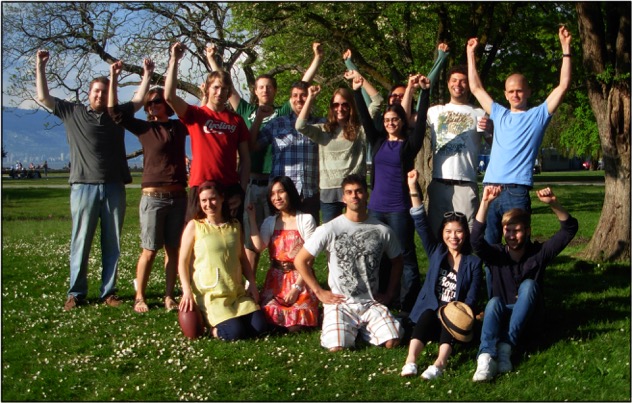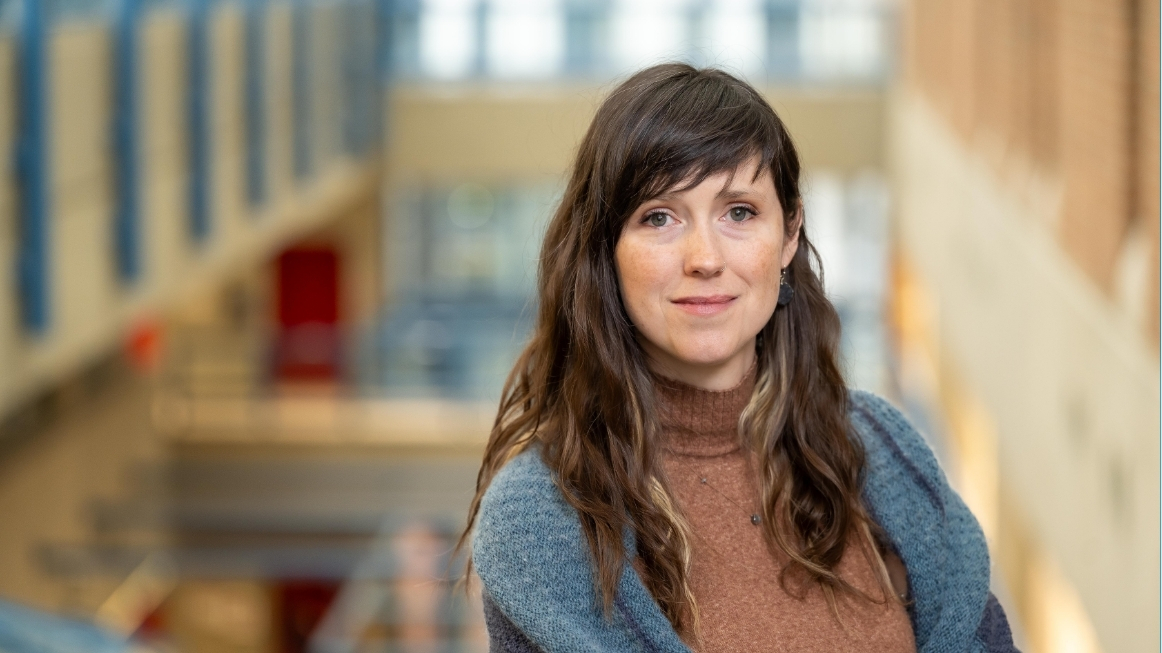

The Emotion and Self Lab Team
Our March lab of the month features Dr. Jessica Tracy, her lab, and the extensive research the lab it has yielded. From addictions to social interactions, Dr. Tracy’s research highlights the roles of pride and shame in our lives.
There may only be six basic emotions, but there is nothing basic about Jessica Tracy’s Emotion and Self Lab. Encompassing many different aspects of emotion including self-conscious emotions, non-verbal expressions, discrepancies across cultures, and the outcomes of showing emotional displays, Dr. Tracy and her graduate students explore a wide spectrum of research. Their findings and observations may serve to help explain the way humans interact and respond to every day events.


Jessica Tracy
Throughout Dr. Tracy’s research career, her focus has been primarily on exploring the purpose of feeling pride and shame. Having recently finished a trade book summarizing her research and other findings on pride, Dr. Tracy seeks to move beyond those fields of study. “I’ve been doing work on morality and moral decision making with my PhD student Conor Steckler; the psychological structure of positive emotional experiences with my PhD student Aaron Weidman; and with my PhD student Alec Beall, we’ve been looking at what emotions are attractive as well as examined factors that predict attractiveness.”
In relation to her work on pride and shame, Tracy has also been looking at the role of status. “In our research, we often take a functionalistic viewpoint and think about why we have certain emotions and what do they do for us. When looking at pride and shame, you get to status right away. When we feel pride, it motivates us to do things to secure our status, while shame hurts our status. So I’ve done a lot of work with my students and collaborators to try to figure out what status is, the different types of status, as well as their outcomes.”
Taking her research out of the lab, some of Tracy’s findings on pride and shame can easily be applied to common-place problems that people face. “When people are suffering from an addiction, shame is probably not a good thing to feel, which is in many ways counter-intuitive. Usually people think when you do something bad, you feel ashamed and stop doing it. But for certain behaviours, that doesn’t seem to be the case.” It appears that the feeling of shame may be so powerful and influential that it makes the person feel they are unable to stop the addiction, so they’ll keep on doing it. “We also know that things like drinking are a way to inhibit self-awareness which is the cause of shame. So continuing the behaviour may make the feeling of shame go away temporarily,” adds Tracy.
Another finding describes the effects of two different kinds of pride. “We call them authentic and hubristic pride.” Authentic pride is often what people think of when viewing pride in a positive light. It is attributed to confidence, productivity, and feelings of achievement. On the other hand, hubristic pride is more arrogance, or the negative side of pride. “Our studies suggest that authentic pride has lots of good outcomes. It’s sort of what makes people work hard, want to achieve, and be a good person. Hubristic pride, however, often gets people power, so those with more hubristic pride often have a lot of social influence, but in a dangerous kind of way.” This leads to a more dominant personality and is associated with being disliked and feared rather than being more respected and admired. There are issues with psychological functioning that also occur as a result of hubristic pride. “People high in hubristic pride tend to be more depressed, anxious, and have fewer quality relationships. So one thing I argue in my book is that authentic pride is great, you shouldn’t avoid feeling pride, but hubristic pride is really problematic, so the key is to moderate which pride you feel.”
The methods in which the Emotion and Self Lab collects data include regular practices such as surveys and self-report, but there are also more unique ways that the lab members analyze emotions. “We often look at people interacting in groups,” says Tracy. In these experiments, participants are asked to work with other strangers in order to complete a task. From their observed interactions, the researchers can watch as “a hierarchy emerges” and examine a variety of factors. “We look at the kind of personality and emotion characteristics that contribute to getting influence over the group. We also do a lot of behavioural assessments. For example, with this alcoholism study, we have people talk about their emotions while video-taping them, and then research assistants code the videos for behaviours that we know are linked with shame and pride.” This way of measuring shame allows researchers to collect data fairly reliably when properly trained. It is also helpful when measuring feelings such as shame in instances where people may not honestly report those feelings due to stigma. By measuring their behaviour, they cannot help but show it.
For students looking for volunteer research positions, the Emotion and Self Lab offers a lot of variety in their research. “We’re always looking for research assistants,” says Tracy. Some tasks that research assistants do in the lab include running studies with deception, acting as a confederate, and coding non-verbal displays. Indeed, with its wide spectrum of research, the lab may suit the interests of many different students.
With such a large and diverse lab, it is reasonable to conclude that we can expect great things from the Emotion Lab in future research.
-Samantha Yang


